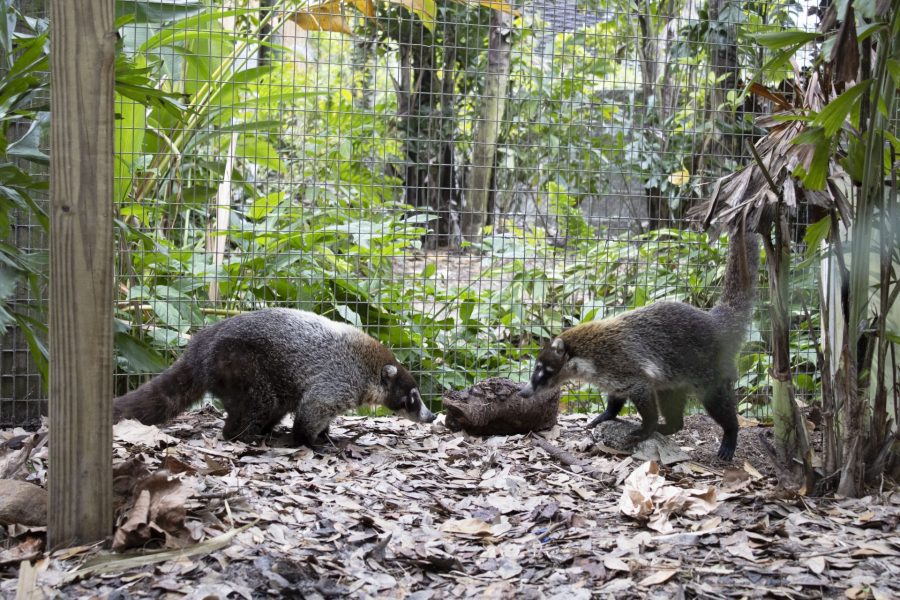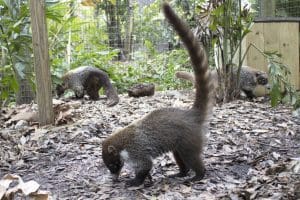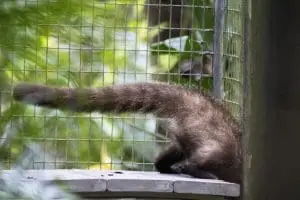

Our two coati bands are getting to know each other in a new shared habitat!
If you spot five of our white-nosed coatis in one habitat, your eyes have not deceived you! We are allowing our three younger coatis, or kits, to interact with our two older coati residents.
This introduction is one of the final stages in a long process of slowly allowing the two groups, or bands, to interact with the goal of having all our coatis be a cohesive group. We put a pause to the introductions for a time while we learned more about the heart defect of one of our coati kits, but the two bands are now back together.

A coatimundi kit explores their new habitat with older coatis Katie and Lupita nearby.
This change will let this social species the chance to have a more natural social structure in our care. While they are under the age of two, coatis will typically coexist with both sexes and in groups up to 20 individuals.
In December 2020, construction began to expand our coati habitat with the goal of caring for breeding pairs in the future. This will be done to support the Association of Zoos and Aquariums’ Species Survival Plan (SSP) for coatis. SSPs manage the populations of animals within AZA-accredited zoos to ensure healthy, genetically diverse groups. Our director of animal programs, Lauren Hinson, is the white-nosed coati SSP coordinator.
Our coati kits, females Agave and Romi and male Tito, moved to one of the habitats full-time last September, which started the initial howdy process between them and our older females. A “howdy” is when two or more animals are introduced with a barrier of some sort between them. Our two adults, Katie and Lupita, were able to see, hear and smell the kits and vice versa.
This January, we started allowing the coati kits to access the mesh tunnels between the two habitats, giving them a next level of a “howdy.” We continued to increase how close the two bands could get to each other, with keepers on hand to monitor all the coatis’ behavior.
“Each step we take gets them one step closer to the physical introduction process,” said Kim Castrucci, curator of animals. “This allows us to monitor all behavior closely, so we know when the appropriate time to move forward is based on said behavior.”

A coatimundi kit explores their new habitat.
Recently, the two groups were allowed to share physical space with each other. Introductions can be potentially intense for all the animals, so our keepers try to lessen this by giving animals the chance to express natural behaviors during the process. For our coatis, we gave them the chance to investigate different scents.
“Coatis are very scent orientated animals,” Kim said. “It is a huge part of their natural behavior repertoire.”
Even once they become a cohesive group, you may see their structure change again. Our male, Tito, may be given his own space for breeding purposes, which fits coatis’ natural instincts. Adult males are typically solitary, except for during breeding season. It is also possible that animals who grow up together have a lesser chance of becoming a breeding pair, as they see their habitat mates more as siblings, Kim said.
Keep an eye out for future news on our coati band! In the meantime, we hope you enjoy seeing our lively coati habitat.
Brevard Zoo is an independent, not-for-profit organization that receives no recurring government funding for our operating costs. Your generous support enables us to continue to serve our community and continue our vital animal wellness, education and conservation programs.
